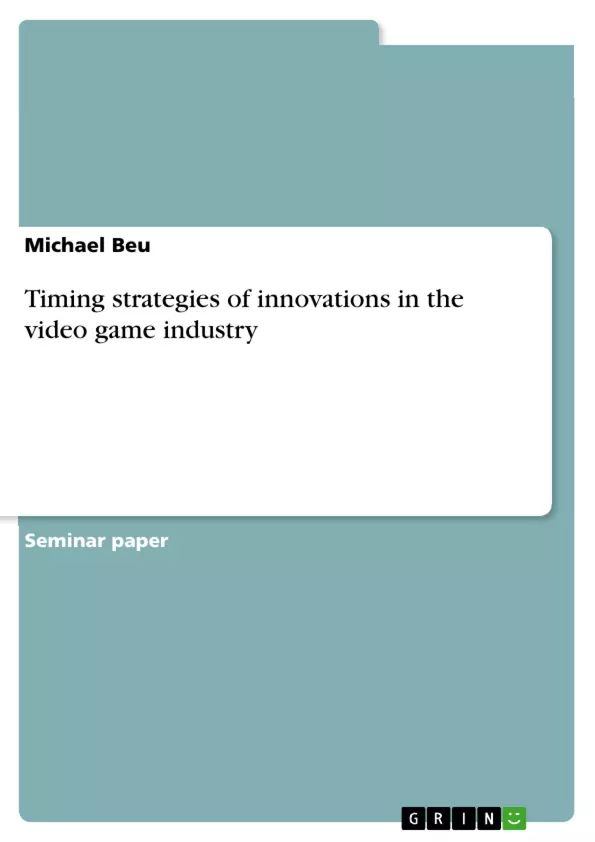The intention of this assignment is to figure out if timing strategies are relevant for the innovation process. In case to do this the author took the example of the video game industry to deflect several timing strategies. The choice for the video game industry depended on the high innovation ratio in this industry. Since 1977 at least every year was a new console released which was in handling, performance, or technology different from the ancestor products.
The target is the evaluation of timing strategies as a success driver for this industry. The focus lay on the time-to-market timing and the market-entry timing.
To come to a result at first the term innovation will be defined. The second step is a description of the innovation process. Out of the innovation process the author will deflect different timing strategies. The next part of the assignment will be a short overview of the video game industry. After that a case study will follow which reflects the release of video game consoles of the last 20 years beyond the aspect of time-to-market and market entry timing. In the end the author will give a conclusion of the treatment of timing strategies in combination with innovations.
Inhaltsverzeichnis (Table of Contents)
- Introduction
- Innovation
- Term definition
- Innovation process
- Timing strategies
- Case study - Video game industry
- Industry overview
- Pioneers and followers
- Conclusion
Zielsetzung und Themenschwerpunkte (Objectives and Key Themes)
This assignment aims to investigate the relevance of timing strategies within the innovation process. The author utilizes the video game industry as a case study to illustrate various timing strategies, particularly focusing on the high innovation rate of the industry. The objectives center around evaluating timing strategies as a success driver for this industry, with emphasis on time-to-market and market-entry timing.
- The influence of timing strategies on the success of innovation in the video game industry.
- A comparative analysis of different timing strategies employed by video game companies.
- The impact of market entry timing and time-to-market strategies on competitive advantage within the video game industry.
- The dynamics of innovation and its relationship to the development and release of new video game consoles.
Zusammenfassung der Kapitel (Chapter Summaries)
The introduction of this assignment outlines its purpose and scope, which is to explore the role of timing strategies in innovation, particularly within the video game industry. This choice is justified by the industry's rapid rate of innovation, as seen in the frequent release of new consoles with technological advancements.
The chapter on Innovation dives into the definition of the term itself, tracing its origins and exploring its various dimensions. The chapter also delves into the innovation process, highlighting its different stages and the strategic importance of timing in this process.
The case study dedicated to the video game industry provides an overview of the industry landscape and its key players. The chapter analyzes the dynamics between pioneers and followers in the industry, examining the strategies they employ and their impact on the overall market.
Schlüsselwörter (Keywords)
Key terms and concepts explored in this work include innovation, timing strategies, video game industry, pioneers and followers, time-to-market, market-entry timing, innovation process, console release, competitive advantage, success driver, industry overview, and product lifecycle management.
- Quote paper
- Michael Beu (Author), 2013, Timing strategies of innovations in the video game industry, Munich, GRIN Verlag, https://www.grin.com/document/510910



